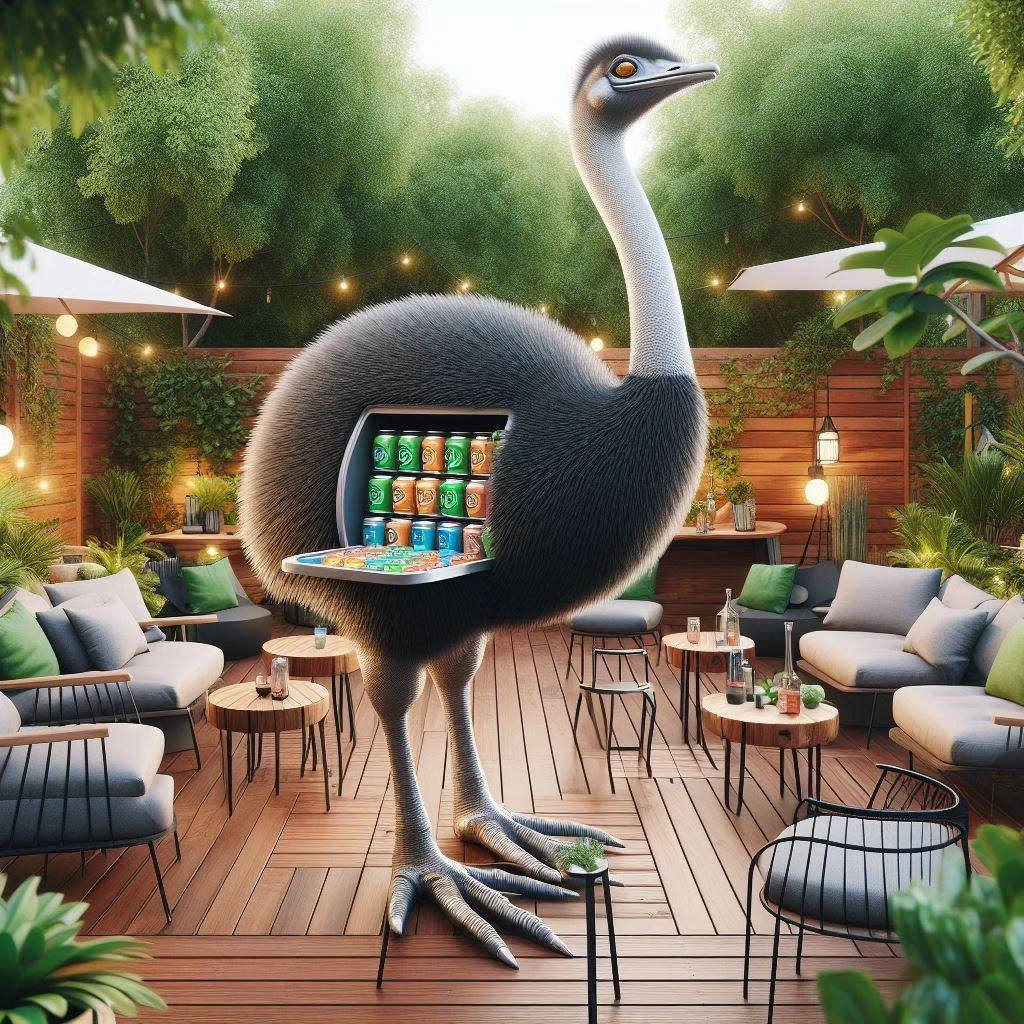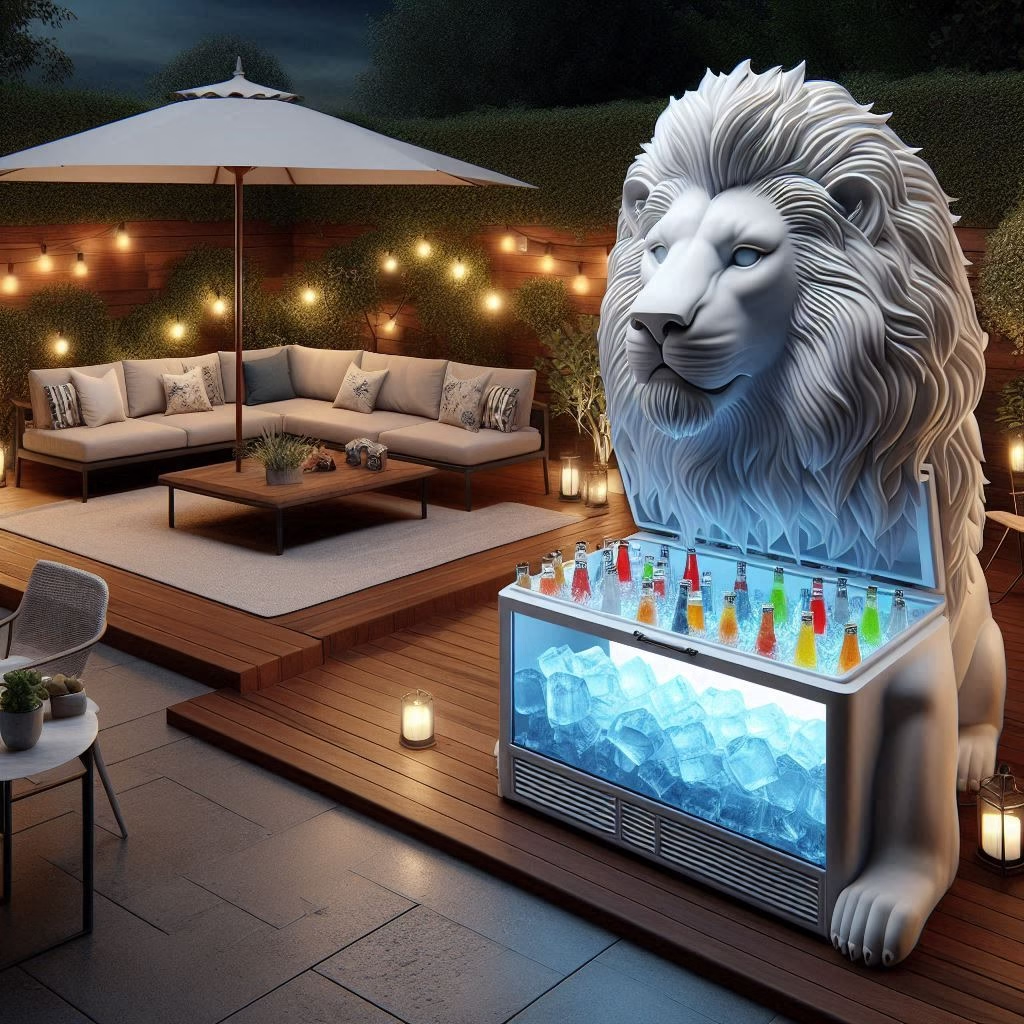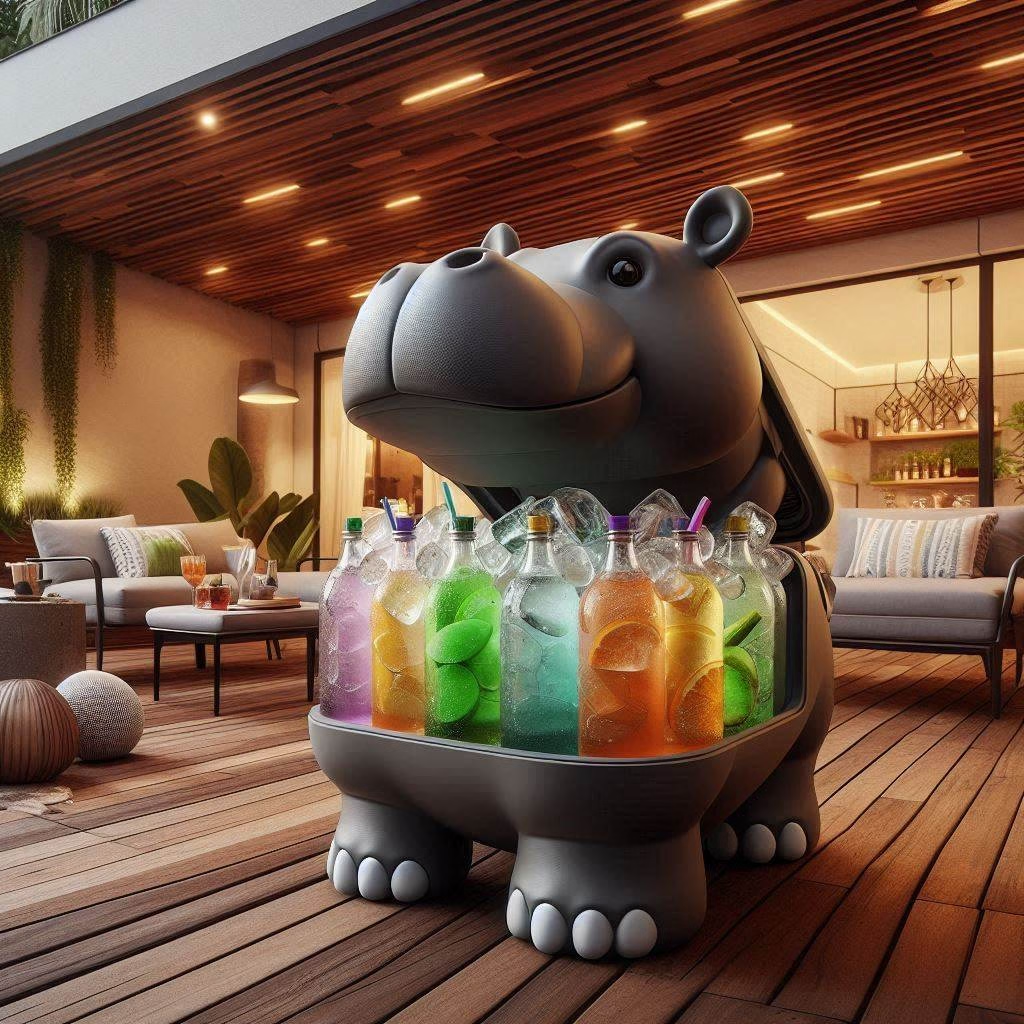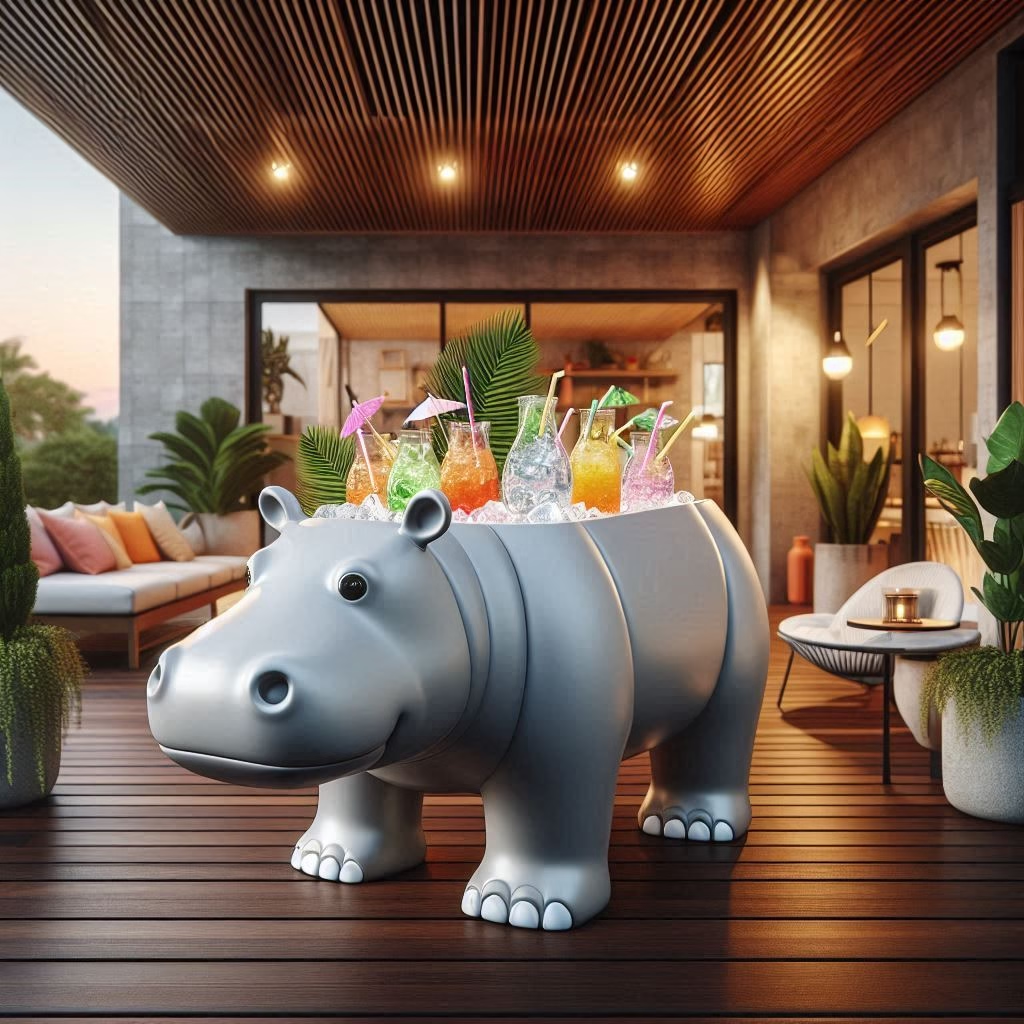Discover the benefits, types, and tips for using animal coolers to keep your pets and livestock cool. Learn how these innovative solutions ensure comfort and health during hot weather.

Introduction
Animals, whether pets or livestock, are just as vulnerable to extreme heat as humans. Keeping them cool is not just about comfort; it’s about protecting their health and well-being. Enter animal coolers—an essential tool for pet owners, farmers, and wildlife enthusiasts to ensure their animals stay safe during sweltering conditions.
In this comprehensive guide, we’ll explore the world of animal coolers, their benefits, the different types available, and tips on choosing the right one for your specific needs. Let’s dive in!
What Are Animal Coolers?
An animal cooler is a product or system designed to regulate the body temperature of animals, particularly in hot weather. They range from cooling mats and wearable cooling vests for pets to sophisticated cooling systems for livestock in barns or outdoor enclosures.
By lowering the risk of heat stress, animal coolers play a crucial role in maintaining animal health, productivity, and overall well-being.
Why Are Animal Coolers Important?
1. Prevention of Heat Stress
Heat stress can be fatal for animals, causing dehydration, organ damage, and even death. Animal coolers help maintain a safe temperature, especially during heatwaves.
2. Improved Productivity for Livestock
For farmers, keeping livestock cool means better productivity. Heat-stressed animals often eat less, produce less milk, and exhibit reduced growth rates.
3. Enhanced Comfort for Pets
For pets like dogs and cats, animal coolers ensure they remain comfortable indoors or outdoors, preventing lethargy and overheating.
4. Wildlife Support
Animal coolers are also used in wildlife rescue centers to aid injured or ill animals that need temperature regulation.
Types of Animal Coolers
Animal coolers come in various forms, each designed for specific purposes and animal types. Here’s a breakdown:
1. Cooling Mats and Pads
- Ideal for pets such as dogs, cats, or rabbits.
- Made from cooling gel or breathable materials that absorb and dissipate heat.
- Portable and easy to clean, making them perfect for home or travel.
2. Cooling Vests and Jackets
- Worn by animals, these vests are soaked in water and then worn to cool the body through evaporation.
- Great for active pets or working animals like service dogs.
3. Misters and Fans for Livestock
- Used in barns or outdoor enclosures to cool larger animals such as cows, horses, and pigs.
- Often combined with ventilation systems to maximize efficiency.
4. Portable Animal Coolers
- Compact, mobile cooling units designed for smaller enclosures or transport vehicles.
- Essential for road trips with pets or moving livestock during hot weather.
5. Natural Cooling Solutions
- Shade structures, mud pits, or water troughs can act as natural animal coolers, especially for livestock.
- Though less technical, they provide relief in areas with limited access to advanced cooling equipment.
Key Features to Look for in an Animal Cooler
When choosing the right animal cooler, consider the following features:

1. Size and Fit
- For wearable coolers like vests, ensure the product fits your animal comfortably without restricting movement.
- For cooling mats, choose a size that allows your pet or livestock to lie down fully.
2. Durability
- Materials should withstand regular use, especially for active animals or outdoor environments. Look for water-resistant and tear-proof options.
3. Ease of Use
- Choose products that are simple to clean, set up, or activate. For instance, cooling mats that don’t require refrigeration are highly convenient.
4. Portability
- If you’re often on the move, opt for lightweight and portable cooling solutions.
5. Safety Features
- Ensure that materials are non-toxic and safe in case your animal chews or scratches the cooler.
How to Choose the Right Animal Cooler
Step 1: Identify Your Animal’s Needs
- Is the cooler for a pet, livestock, or wildlife?
- Consider their activity level, environment, and susceptibility to heat.
Step 2: Assess the Environment
- For outdoor animals, larger cooling systems or natural solutions may work best.
- Indoor pets might benefit from cooling mats or vests.
Step 3: Check Your Budget
- High-tech animal coolers can be expensive but may be worth the investment for large operations or heat-sensitive animals.
Step 4: Read Reviews
- Customer reviews and testimonials offer insights into the effectiveness and durability of specific products.
Benefits of Using Animal Coolers
1. Health Protection
Animal coolers prevent overheating, reducing the risk of serious health issues such as heatstroke and dehydration.
2. Enhanced Productivity
For farmers, cool livestock are healthier and more productive, whether it’s in terms of milk production, growth, or reproduction rates.
3. Reduced Stress
Coolers help animals stay calm and relaxed, improving their quality of life.
4. Versatility
From pets to farm animals, there’s an animal cooler for every need, whether you’re indoors, outdoors, or on the go.
Tips for Using Animal Coolers Effectively

1. Introduce Gradually
Allow your animal to get used to the cooler by introducing it gradually. For example, let them sniff or explore a cooling mat before use.
2. Monitor Usage
Check the cooler regularly for wear and tear. Ensure that fans, misters, or portable units are functioning properly.
3. Combine with Other Cooling Strategies
Use additional methods such as providing shade, water, or air circulation to maximize cooling efficiency.
4. Adapt for Different Weather Conditions
In extreme heat, supplement coolers with ice packs or extra ventilation to keep temperatures down.
Popular Animal Cooler Brands
1. Coolaroo
Known for its durable cooling mats and shades, Coolaroo offers versatile options for pets and livestock.
2. Arctic Air
Provides portable animal cooling units ideal for travel or small enclosures.
3. K&H Pet Products
Specializes in cooling beds and pads for cats, dogs, and small animals.
4. Farm Innovators
Focused on livestock cooling systems, including misting kits and barn fans.
DIY Animal Coolers: Cost-Effective Solutions
If you’re on a budget or prefer a hands-on approach, DIY animal coolers can be a great alternative. Here are some ideas:
1. Homemade Cooling Mats
Fill a pillowcase with frozen gel packs or wet towels and place it in your pet’s favorite resting spot.
2. Portable Misting Systems
Attach a misting nozzle to a garden hose to create a cooling station for livestock.
3. Shaded Shelters
Build simple shelters using tarps or reflective materials to create shaded areas for outdoor animals.
Maintaining Your Animal Cooler
To ensure your animal cooler lasts and performs effectively:
- Clean it regularly to remove dirt, hair, or bacteria buildup.
- Store portable coolers in a dry, safe place when not in use.
- Replace worn-out parts or damaged materials promptly.

Beyond Summer: Year-Round Uses for Animal Coolers
While animal coolers are most commonly associated with summer, they can also be valuable in other situations:
1. Post-Surgery Recovery
Cooling mats can provide comfort and reduce swelling for pets recovering from surgery.
2. Exercise Recovery
Working animals, such as dogs involved in agility or herding, can benefit from cooling vests after intense activity.
3. Travel Comfort
Animal coolers make long trips more comfortable for pets, preventing them from overheating in vehicles.
The Future of Animal Coolers: Emerging Innovations
As technology advances, the design and functionality of animal coolers are evolving to meet diverse needs. From smart systems to eco-friendly alternatives, the future looks promising. Here’s a glimpse of what’s on the horizon for animal cooling solutions.
Smart Animal Coolers: A High-Tech Approach
The integration of technology into animal care has paved the way for smart animal coolers, which use sensors, automation, and remote controls to enhance cooling efficiency.
1. Temperature Monitoring Systems
- Smart coolers can monitor an animal’s body temperature and adjust the cooling intensity automatically.
- These systems are especially useful for animals prone to overheating, such as brachycephalic (short-nosed) dog breeds or dairy cattle.
2. Mobile App Integration
- Some cooling units now come with mobile apps, allowing pet owners and farmers to control settings remotely.
- Features like scheduling cooling times or receiving alerts when temperatures rise are becoming standard in high-tech models.
3. Solar-Powered Coolers
- Eco-friendly animal coolers powered by solar energy are gaining popularity in rural areas or locations with limited access to electricity.
- These systems are cost-effective and sustainable, ensuring animals stay cool without inflating energy bills.
Eco-Friendly and Sustainable Cooling Solutions
With a growing emphasis on sustainability, many manufacturers are focusing on eco-friendly animal coolers that reduce environmental impact.
1. Recycled Materials
- Cooling mats and vests made from recycled or biodegradable materials are entering the market.
- These products are both durable and environmentally responsible.
2. Water-Saving Systems
- Advanced misting systems designed for livestock use minimal water while maximizing cooling efficiency.
- Closed-loop systems recycle water, ensuring no wastage in drought-prone areas.
3. Natural Cooling Structures
- Incorporating vegetation, reflective surfaces, or earth-based shelters can naturally cool animal habitats while blending into the environment.
Industry-Specific Applications of Animal Coolers

1. For Veterinary Clinics
- Cooling mats and portable units are essential tools in veterinary practices to help regulate body temperature for animals recovering from surgeries or illnesses.
- Specialized coolers with built-in temperature controls are used for critical care situations.
2. For Agriculture
- Dairy farmers rely on large-scale misting and fan systems to keep herds cool during peak production seasons.
- Poultry farmers use cooling pads in coops to prevent heat-induced stress and maintain egg production.
3. For Pet Grooming
- Grooming salons often use cooling towels or mats to soothe pets during and after grooming sessions, particularly in warmer climates.
- Some facilities now incorporate air-conditioned grooming stations equipped with animal coolers.
Animal Coolers and Extreme Weather Events
With climate change contributing to more frequent and intense heatwaves, animal coolers are becoming an essential tool for managing extreme weather.
1. Emergency Preparedness
- Portable cooling systems can be lifesaving during natural disasters, such as hurricanes or heatwaves, when animals are displaced or confined.
- Many shelters now stock cooling mats and portable fans as part of their emergency kits.
2. Wildlife Conservation
- In arid regions, wildlife conservationists use large-scale coolers and watering systems to protect endangered species from heat stress.
- Artificial oases equipped with cooling technology provide relief to animals in harsh environments.
3. Urban Animal Care
- City-dwelling pets, especially those in apartments, benefit from indoor cooling systems during power outages or extreme heat.
- Public parks and animal-friendly spaces are beginning to install misting stations and shaded rest areas.
Addressing Misconceptions About Animal Coolers
As animal coolers become more prevalent, it’s important to dispel some common myths about their usage.
Myth 1: Cooling Products Are Only for Dogs
While dogs are common users of animal coolers, these products are equally beneficial for cats, rabbits, reptiles, birds, and livestock.
Myth 2: Natural Cooling Is Always Enough
Shade and water alone may not suffice in extreme heat or for heat-sensitive breeds. Combining natural methods with animal coolers ensures comprehensive protection.
Myth 3: Cooling Products Are Too Expensive
While some high-tech systems can be costly, there are affordable options like cooling mats, towels, and DIY solutions that provide effective relief without breaking the bank.

Stories of Success: Real-Life Applications of Animal Coolers
1. Saving Lives During a Heatwave
In a record-breaking heatwave in Australia, a wildlife rescue organization used portable animal coolers to save koalas and kangaroos suffering from dehydration. The coolers provided immediate relief and played a critical role in their recovery.
2. Improving Milk Production on a Dairy Farm
A dairy farm in California installed a state-of-the-art misting system, reducing heat stress in their cattle. As a result, milk production increased by 20%, proving the economic and health benefits of proper cooling.
3. Enhancing Pet Comfort at Dog Shows
Participants at a national dog show praised the use of cooling vests and mats, which kept show dogs calm and comfortable despite the summer heat.
Top Tips for Maintaining Cool Environments
Keeping your animal cool involves more than just using an animal cooler. Here are some additional tips to create a heat-safe environment:
1. Provide Constant Access to Fresh Water
Ensure animals have unlimited access to clean, cool water to stay hydrated. For outdoor animals, place water containers in shaded areas.
2. Create Ventilated Spaces
Use fans or open windows to improve airflow in enclosed areas like barns, coops, or kennels.
3. Avoid Overexertion
Limit exercise or work during the hottest parts of the day, especially for pets or working animals.
4. Use Reflective or Cooling Flooring
For enclosures, opt for surfaces that reflect heat rather than absorb it, such as reflective paints or cooling floor mats.
Conclusion: Invest in Your Animal’s Comfort and Safety
Animal coolers are a game-changing tool for ensuring the well-being of pets, livestock, and even wildlife. From preventing heat stress to enhancing productivity and comfort, these innovative solutions are essential for any animal caretaker.
By choosing the right cooler for your animal’s needs, maintaining it properly, and combining it with other cooling strategies, you can provide a safe and comfortable environment regardless of the weather.
Explore the options available today and invest in a high-quality animal cooler—your furry or feathered friends will thank you for it!











